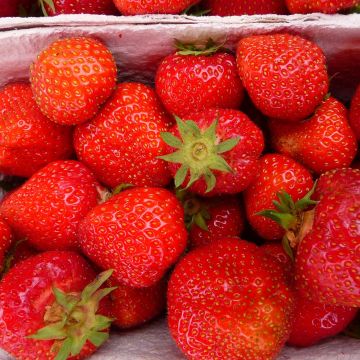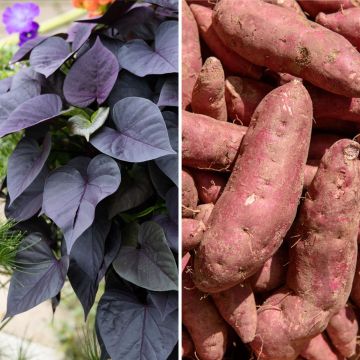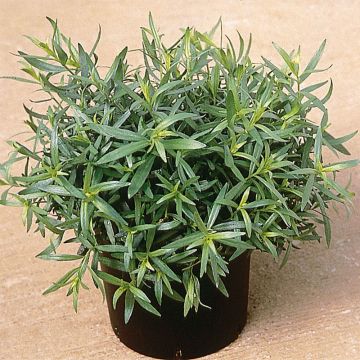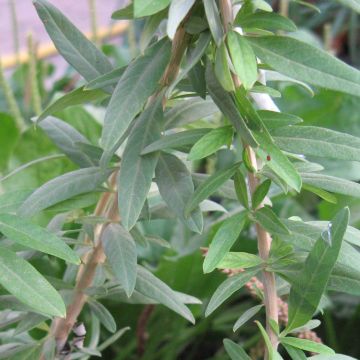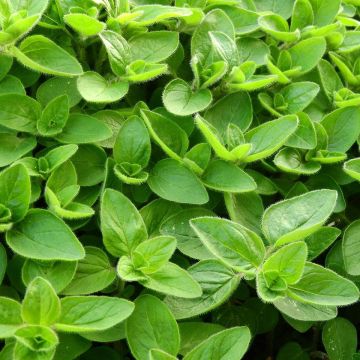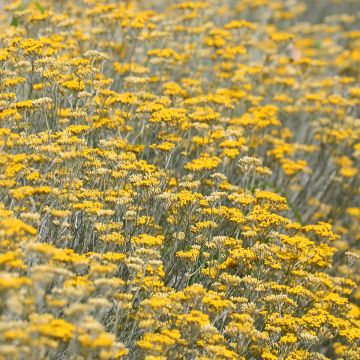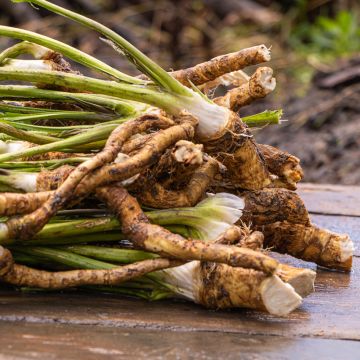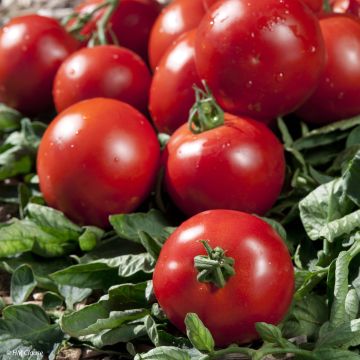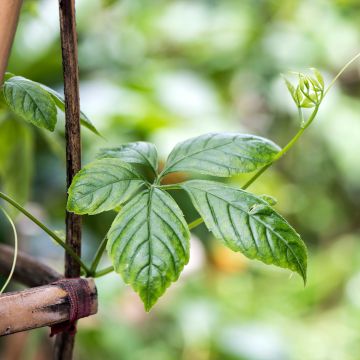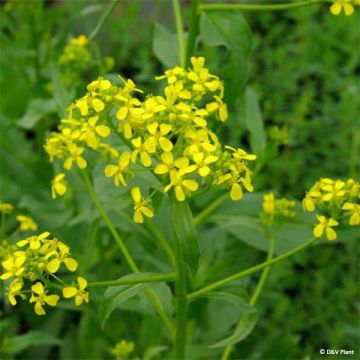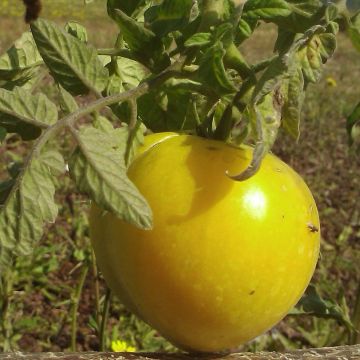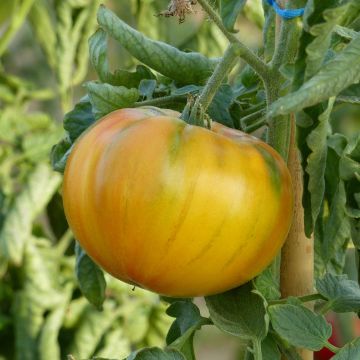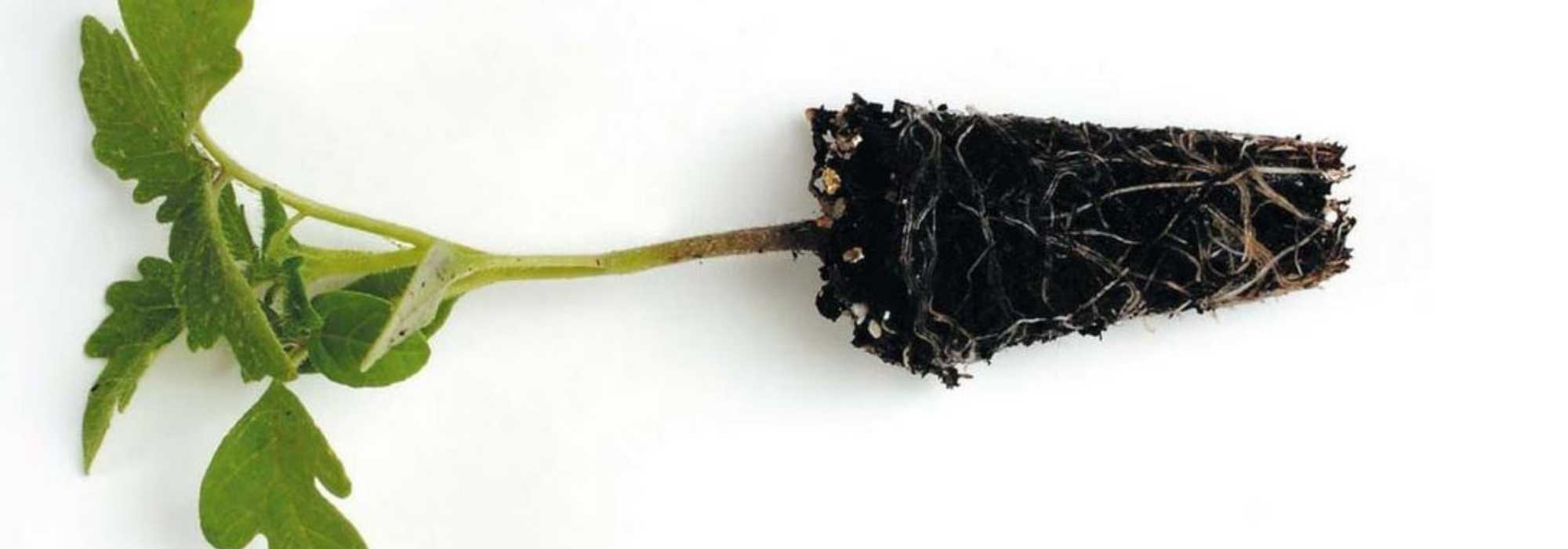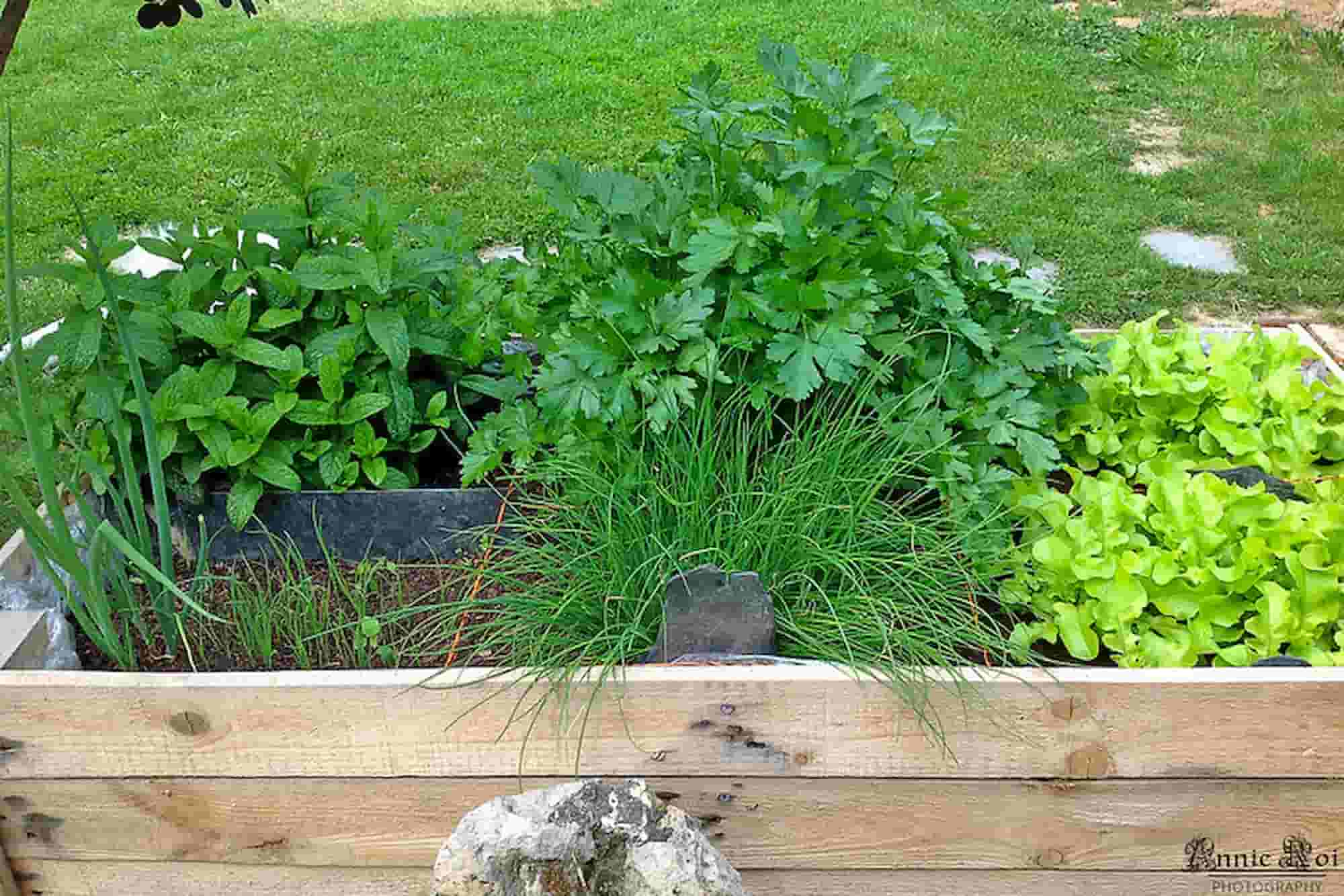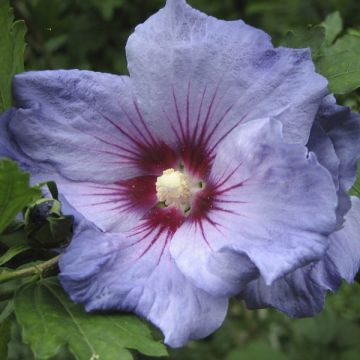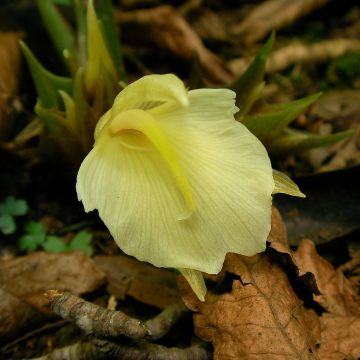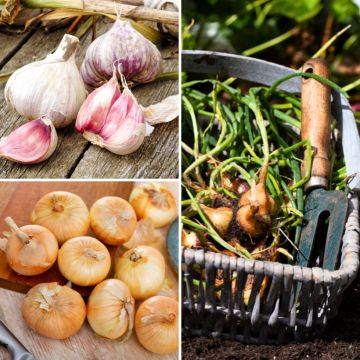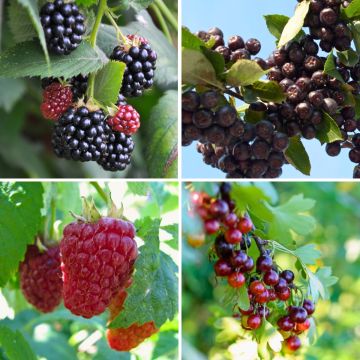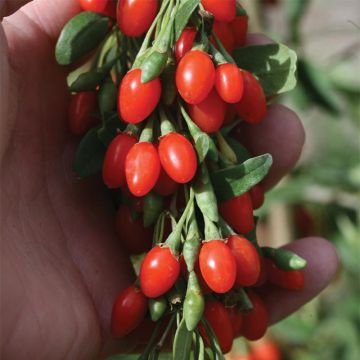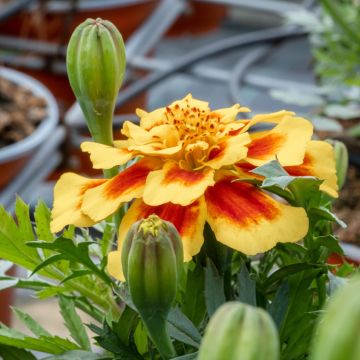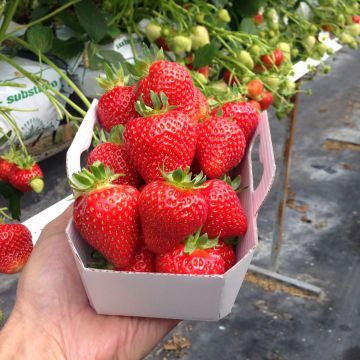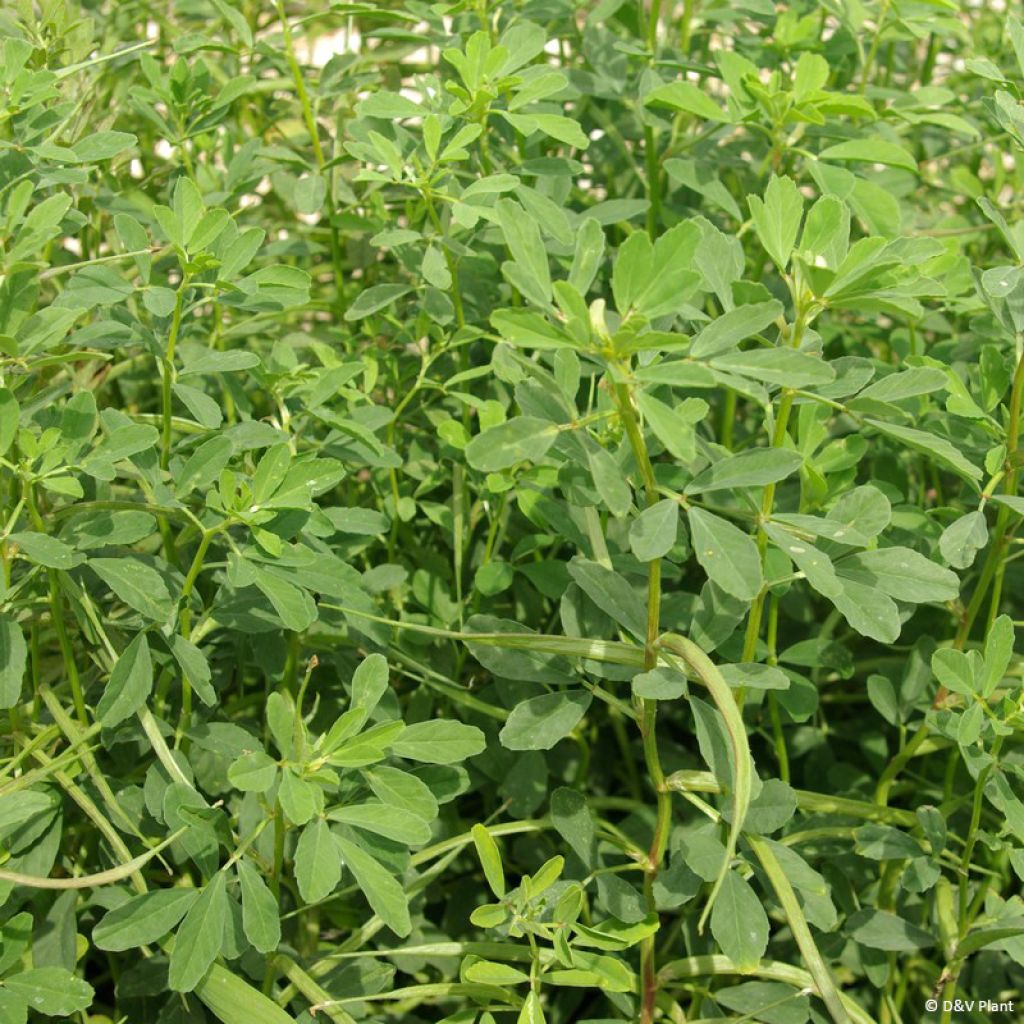

Fenugrec en plant - Trigonella foenum-graecum
Fenugreek in plant - Trigonella foenum-graecum
Trigonella foenum-graecum
Fenugreek, Greek hay
Special offer!
Receive a €20 voucher for any order over €90 (excluding delivery costs, credit notes, and plastic-free options)!
1- Add your favorite plants to your cart.
2- Once you have reached €90, confirm your order (you can even choose the delivery date!).
3- As soon as your order is shipped, you will receive an email containing your voucher code, valid for 3 months (90 days).
Your voucher is unique and can only be used once, for any order with a minimum value of €20, excluding delivery costs.
Can be combined with other current offers, non-divisible and non-refundable.
Why not try an alternative variety in stock?
View all →This plant carries a 6 months recovery warranty
More information
We guarantee the quality of our plants for a full growing cycle, and will replace at our expense any plant that fails to recover under normal climatic and planting conditions.
Description
Trigonella foenum-graecum, also known as fenugreek or Greek hay, is an annual legume of Mediterranean origin, cultivated as a condiment, for its medicinal properties, as a green manure, or as fodder. The yellowish seed emits a strong characteristic odour, and its bitter flavour is a blend of celery and walnut. It grows quickly. Fenugreek grows on limestone soils and in dry climates. It is planted in spring.
Fenugreek is an annual plant native to North Africa. It is an herbaceous plant that reaches about 60cm (24in) high in one season. Its foliage consists of three slightly bluish-green oval leaflets. Its flowering occurs from April to June in the form of yellowish-white flowers. It is followed by the formation of long, slender pods, shaped like horns, containing its seeds.
This plant has been known since antiquity, when it was cultivated to feed livestock, hence its name "Greek hay". Fenugreek is also used as a condiment, for medicinal purposes, and as a dye. In cooking, its leaves are used like spinach and its seeds are ground to flavour Indian or North African dishes. They are often soaked in water and then roasted to remove bitterness. Fenugreek is one of the ingredients in curry, Viandox, and ras-el-hanout. Fenugreek powder is a spice that contains many nutrients: phosphorus, iron, sulphur, flavonoids, carbohydrates, vitamins A, B1, C, magnesium, calcium, lecithin, and proteins (30%). Fenugreek is reputed to stimulate appetite, repel lice, and promote hair growth. It is also used to make dyes that produce a beautiful crimson colour. Ingesting fenugreek gives sweat and urine a peculiar and persistent odour.
The pods are harvested when they are still closed, in late summer or early autumn, and kept for a week or two in a well-ventilated, dry place.
Like all plants belonging to the Fabaceae family, fenugreek is particularly appreciated for its ability to fix atmospheric nitrogen. It enriches soil with nitrogen while providing it with a vegetative cover that protects it from leaching caused by rain and weed growth.
As green manure, fenugreek is broadcast-sown on freshly tilled soil. Once developed, it is then mown before it goes to seed. It can then be incorporated into the soil or left in place as mulch. It is perfectly adapted to dry soils, hot climates, and calcareous soils, but performs less well in mountainous areas and clay soils. It can be used alone or mixed with crimson clover, vetch, and oats as a nitrogen provider.
Green fertilisers are sown on uncultivated plots or intercalary plots, between rows of vegetables. They are either naturally destroyed by frost or cut before seed formation. Once destroyed, they can be left in place as mulch, shredded and incorporated into the surface layers of the soil, or collected and added to compost.
Report an error about the product description
Harvest
Plant habit
Foliage
Other Vegetable plants A to Z
View all →Planting and care
Plant in spring, after the risk of frost has passed. Plant in the sun, in light and well-drained soil.
Fenugreek is perfectly adapted to dry limestone soils and hot climates, but it does not perform as well in mountainous areas and clay soils. It needs warmth to grow and it is destroyed by frost at -5°C (23°F).
Cultivation
Care
Intended location
Planting & care advice
This item has not been reviewed yet - be the first to leave a review about it.
Similar products
Haven't found what you were looking for?
Hardiness is the lowest winter temperature a plant can endure without suffering serious damage or even dying. However, hardiness is affected by location (a sheltered area, such as a patio), protection (winter cover) and soil type (hardiness is improved by well-drained soil).

Photo Sharing Terms & Conditions
In order to encourage gardeners to interact and share their experiences, Promesse de fleurs offers various media enabling content to be uploaded onto its Site - in particular via the ‘Photo sharing’ module.
The User agrees to refrain from:
- Posting any content that is illegal, prejudicial, insulting, racist, inciteful to hatred, revisionist, contrary to public decency, that infringes on privacy or on the privacy rights of third parties, in particular the publicity rights of persons and goods, intellectual property rights, or the right to privacy.
- Submitting content on behalf of a third party;
- Impersonate the identity of a third party and/or publish any personal information about a third party;
In general, the User undertakes to refrain from any unethical behaviour.
All Content (in particular text, comments, files, images, photos, videos, creative works, etc.), which may be subject to property or intellectual property rights, image or other private rights, shall remain the property of the User, subject to the limited rights granted by the terms of the licence granted by Promesse de fleurs as stated below. Users are at liberty to publish or not to publish such Content on the Site, notably via the ‘Photo Sharing’ facility, and accept that this Content shall be made public and freely accessible, notably on the Internet.
Users further acknowledge, undertake to have ,and guarantee that they hold all necessary rights and permissions to publish such material on the Site, in particular with regard to the legislation in force pertaining to any privacy, property, intellectual property, image, or contractual rights, or rights of any other nature. By publishing such Content on the Site, Users acknowledge accepting full liability as publishers of the Content within the meaning of the law, and grant Promesse de fleurs, free of charge, an inclusive, worldwide licence for the said Content for the entire duration of its publication, including all reproduction, representation, up/downloading, displaying, performing, transmission, and storage rights.
Users also grant permission for their name to be linked to the Content and accept that this link may not always be made available.
By engaging in posting material, Users consent to their Content becoming automatically accessible on the Internet, in particular on other sites and/or blogs and/or web pages of the Promesse de fleurs site, including in particular social pages and the Promesse de fleurs catalogue.
Users may secure the removal of entrusted content free of charge by issuing a simple request via our contact form.
The flowering period indicated on our website applies to countries and regions located in USDA zone 8 (France, the United Kingdom, Ireland, the Netherlands, etc.)
It will vary according to where you live:
- In zones 9 to 10 (Italy, Spain, Greece, etc.), flowering will occur about 2 to 4 weeks earlier.
- In zones 6 to 7 (Germany, Poland, Slovenia, and lower mountainous regions), flowering will be delayed by 2 to 3 weeks.
- In zone 5 (Central Europe, Scandinavia), blooming will be delayed by 3 to 5 weeks.
In temperate climates, pruning of spring-flowering shrubs (forsythia, spireas, etc.) should be done just after flowering.
Pruning of summer-flowering shrubs (Indian Lilac, Perovskia, etc.) can be done in winter or spring.
In cold regions as well as with frost-sensitive plants, avoid pruning too early when severe frosts may still occur.
The planting period indicated on our website applies to countries and regions located in USDA zone 8 (France, United Kingdom, Ireland, Netherlands).
It will vary according to where you live:
- In Mediterranean zones (Marseille, Madrid, Milan, etc.), autumn and winter are the best planting periods.
- In continental zones (Strasbourg, Munich, Vienna, etc.), delay planting by 2 to 3 weeks in spring and bring it forward by 2 to 4 weeks in autumn.
- In mountainous regions (the Alps, Pyrenees, Carpathians, etc.), it is best to plant in late spring (May-June) or late summer (August-September).
The harvesting period indicated on our website applies to countries and regions in USDA zone 8 (France, England, Ireland, the Netherlands).
In colder areas (Scandinavia, Poland, Austria...) fruit and vegetable harvests are likely to be delayed by 3-4 weeks.
In warmer areas (Italy, Spain, Greece, etc.), harvesting will probably take place earlier, depending on weather conditions.
The sowing periods indicated on our website apply to countries and regions within USDA Zone 8 (France, UK, Ireland, Netherlands).
In colder areas (Scandinavia, Poland, Austria...), delay any outdoor sowing by 3-4 weeks, or sow under glass.
In warmer climes (Italy, Spain, Greece, etc.), bring outdoor sowing forward by a few weeks.






























